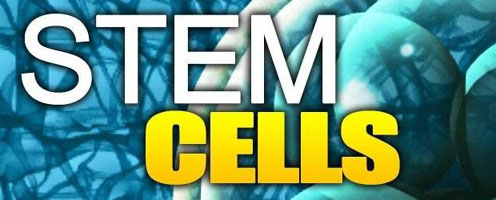A study published last week has shown that adult stem cells derived from ethical sources can be used to create living tissues that imitate the developing human brain. In their findings, published in the science journal Nature, researchers asserted that, by using human stem cells derived from skin cells, they were able to assemble brain-like pieces of living tissue. These stem cells could prove to be an invaluable resource for the study and treatment of various neuro-developmental disorders.
Researchers developed complex neural-tissue clumps by first growing the stem cells on a synthetic gel that resembled connective tissues found in the brain and elsewhere in the body. Then they infused the tissue clumps with nutrients and oxygen. Scientists had previously used human stem cells to grow structures resembling the eye and even tissue layers similar to the brain’s cortex.
 “The big surprise was that it worked,” says Juergen Knoblich, a developmental biologist at the Institute of Molecular Biotechnology in Vienna and one of the researchers behind the study. The clumps of tissue ultimately grew to resemble the brains of unborn human babies at about nine weeks gestation.
“The big surprise was that it worked,” says Juergen Knoblich, a developmental biologist at the Institute of Molecular Biotechnology in Vienna and one of the researchers behind the study. The clumps of tissue ultimately grew to resemble the brains of unborn human babies at about nine weeks gestation.
Dr. Knoblich also pointed out that the tissue structure is not the same as that of an intact brain – adding that normal brain maturation in an embryo is most likely guided by growth signals from other parts of the body. The tissue also lacks blood vessels, which could be one reason that the tissue only grew to be 3-4 millimeters in diameter.
The researchers behind the study used the system to model key aspects of microcephaly, a neurological condition that causes stunted brain growth and cognitive impairment. Microcephaly can be caused by a variety of genetic and environmental factors but there are currently no treatments. According to the research team, tissue masses cultured from stem cells derived from the skin of a person with microcephaly did not grow to be as large as those stem cells derived from a healthy person. The research team hypothesizes that this is due to the premature differentiation of neural stem cells inside the microcephalic tissue chunks which diminishes the population of progenitor cells that fuels normal brain growth.
CLICK LIKE IF YOU’RE PRO-LIFE!
The more scientists are able to learn about such disorders, the more hope there is for those afflicted by them and for their families.
The news of this advance in stem cell science comes just as the California Institute of Regenerative Medicine (CIRM) has issued another round of research grants totaling more than $40 million dollars to be spent on stem cells research. Once again, CIRM grants have strongly favored ethical, non-embryonic stem cell research. The motivation behind this does not seem to be deep-rooted belief in the inherent dignity of every human life, including in the most vulnerable embryonic stage. Rather, it is due to the plain and simple fact that embryonic stem cell research has not produced viable treatments and adult stem cell research has proven to be better medicine and a better investment.
The Nature study is just another example, on a long list, demonstrating that science and ethics can be in sweet accord.
LifeNews Note: Nora Sullivan writes for the Lozier Institute.







